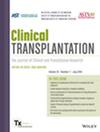Early Onset Mycoplasma spp. Infection After Kidney Transplantation: A Systematic Review
Abstract
Background
In recent years, there has been a progressive increase in the number of Mycoplasma spp. infections (MIs) reported among kidney transplant (KT) recipients. Although in these patients MIs have been associated with life-threatening complications and graft failure, specific epidemiology, clinical characteristics, diagnostic work-up, and treatment strategies remain undefined.
Methods
We performed a systematic review (PubMed, Embase, Scopus, and Cochrane) of MIs after kidney transplantation (PROSPERO ID: CRD42024520942).
Results
Our work summarizes 13 case reports, 7 retrospective case series, and 1 retrospective uncontrolled cohort study, published between 1970 and 2023, collectively reporting 30 episodes of MIs. Due to the scarcity of information, incidence, prevalence, and predisposing factors could not be explored. Time interval between kidney transplantation and MIs ranged between 3 and 120 days. More often, the surgical site (n = 18) or the urinary tract (n = 6) was involved, with most infections sustained by Mycoplasma hominis (n = 28). Clinical features included fever (n = 18), abdominal pain (n = 8), leukocytosis (n = 8), and elevated CRP levels (n = 6). The definitive diagnosis was obtained using microbial cultures (n = 16) or PCR method (n = 12), and the time required for identification varied from 3 to 90 days. Preferred antibiotics were tetracyclines (n = 19) and quinolones (n = 9). Overall, MIs led to 20 surgical interventions, 6 graft losses, and 2 deaths.
Conclusion
Future research projects should consider the epidemiology of Mycoplasma spp. infection in solid organ transplant recipients.


 求助内容:
求助内容: 应助结果提醒方式:
应助结果提醒方式:


